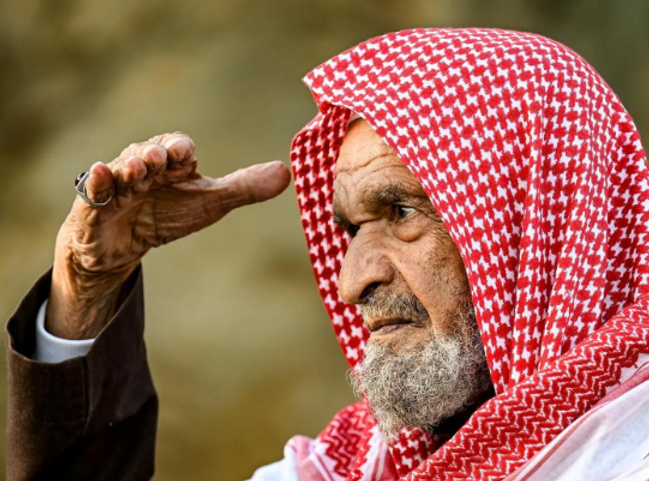
Newsletter Subscribe
Enter your email address below and subscribe to our newsletter

Enter your email address below and subscribe to our newsletter

**Headline:** Saudi Moon-Sighting Blends Tradition, Technology
**Intro:** As Ramadan nears, Saudi families revisit ancestral moon-sighting rituals—from bonfires and cannons to communal storytelling. While elders cherish naked-eye observations and village unity, modern observatories now employ telescopes and cameras, bridging heritage with scientific precision to herald the holy month.
**Factbox (50 words):**
– **Traditional Signals:** Gunfire, mountain bonfires, and cannons announced Ramadan.
– **Elders’ Legacy:** Centenarian Abdul Jaber Al-Sheikh recalls childhood moon-watching with grandparents.
– **Modern Shift:** Astronomer Mohammed Al-Thaqafi cites telescopes, cameras, and observatories replacing naked-eye reliance, enhancing accuracy while honoring historical roots.
**The Timeless Tradition of Moon Sighting in Saudi Arabia: A Bridge Between Past and Present**
As Ramadan approaches each year, Saudi families gather to relive ancestral traditions tied to the sighting of the crescent moon—a celestial event that marks the dawn of Islam’s holiest month. These rituals, steeped in history and nostalgia, evoke memories of an era when communities relied on human connection and the naked eye to confirm Ramadan’s arrival, long before modern astronomy and technology transformed the process.
—
### **Ancestral Methods: Echoes of Gunfire, Bonfires, and Cannons**
For generations, Saudis developed ingenious ways to announce the sighting of the crescent moon. In remote villages, the crackle of gunfire reverberated across valleys, signaling the moon’s appearance. Meanwhile, others lit towering bonfires on mountain peaks, using smoke plumes to relay the news to neighboring towns. In bustling village squares, the thunderous boom of cannons served as an unmistakable declaration: Ramadan had begun.
These methods were not merely practical—they wove communities together in shared anticipation. The sighting was a collective triumph, sparking instant celebrations, prayers, and preparations for the month of fasting and reflection.
—
### **Elders’ Tales: A Childhood Immersed in Moonlit Wonder**
At nearly 100 years old, Abdul Jaber Al-Sheikh shares vivid memories of moon-sighting rituals with the Saudi Press Agency. As a child, he would accompany his grandparents to open fields, their eyes fixed on the horizon. “We’d watch the sunset’s colors shift from gold to deep red, then wait for the faintest sliver of the moon,” he recalls. The sighting was a sacred moment, followed by storytelling sessions where elders linked the moon’s phases to agricultural cycles and spiritual lessons.
Al-Sheikh emphasizes the reverence for sharqah (exceptional eyesight) in his community. Individuals gifted with keen vision were celebrated, entrusted with the responsibility of scanning the twilight sky. Their confirmation of the crescent ignited unity, as families gathered for festive meals and Quranic recitations.
—
### **From Naked Eye to Telescopes: Embracing Modern Precision**
While tradition remains cherished, Saudi Arabia now blends ancestral practices with cutting-edge science. Astronomer Mohammed Al-Thaqafi explains that dedicated observatories across the Kingdom employ telescopes, electronic cameras, and infrared binoculars to detect the moon’s faintest glow—even through clouds or light pollution.
This technological shift ensures accuracy and eliminates discrepancies that once led to varying start dates for Ramadan. However, Al-Thaqafi notes that many Saudis still gaze skyward with the naked eye during Ramadan evenings, honoring a timeless ritual. “The essence of moon sighting endures,” he says. “Technology aids us, but the spiritual longing to connect with the cosmos remains unchanged.”
—
### **A Cultural Tapestry: Where Heritage Meets Progress**
Today, Saudi families recount tales of bonfires and cannons while checking moon-sighting updates on smartphones—a harmonious fusion of past and present. Social media platforms buzz with real-time announcements, yet elders like Al-Sheikh urge younger generations to preserve the wisdom of their ancestors.
Ramadan’s crescent moon, whether spotted through a telescope or a grandfather’s eyes, continues to symbolize renewal, faith, and communal bonds. As Saudi Arabia advances into the future, these traditions stand as a testament to the Kingdom’s enduring reverence for its roots.
**In Summary:**
– **Traditional signals:** Gunfire, bonfires, and cannons united communities.
– **Human connection:** Elders wove moon-sighting into cultural and spiritual narratives.
– **Modern innovation:** Observatories ensure precision while honoring tradition.
– **Unity in duality:** Saudis embrace both heritage and progress during Ramadan.
This blend of history and innovation ensures that the magic of moon sighting—a practice as old as Islam itself—remains alive for generations to come. 🌙✨
**15 FAQs on Ramadan Moon-Sighting Traditions in Saudi Arabia**
1. **How did Saudi Arabian villages traditionally announce the sighting of the Ramadan crescent moon before modern technology, and what methods like gunfire or bonfires were used to signal neighboring communities?**
2. **What role did elders like Abdul Jaber Al-Sheikh play in preserving and transmitting moon-sighting traditions across generations in Saudi Arabian families?**
3. **How have modern astronomical observatories in Saudi Arabia transformed the process of confirming the Ramadan crescent moon compared to historical naked-eye observations?**
4. **Why was exceptional eyesight highly valued in historical Ramadan moon-sighting practices, and how did it foster collective joy among villagers upon the crescent’s confirmation?**
5. **What advanced tools, such as telescopes and electronic cameras, do Saudi observatories now use to enhance accuracy in determining the start of Ramadan?**
6. **What cultural significance did communal activities like bonfires or cannon booms hold in uniting Saudi villages during the announcement of Ramadan’s commencement?**
7. **How did villages in Saudi Arabia coordinate moon-sighting announcements regionally, using methods like mountain-top bonfires or smoke signals, before electronic communication?**
8. **Why did historical moon-sighting practices in Saudi Arabia emphasize observing sunset and twilight colors before searching for the crescent moon?**
9. **How do modern Saudi astronomers like Mohammed Al-Thaqafi balance technological advancements with traditional moon-sighting values to maintain cultural authenticity?**
10. **What challenges did Saudi communities face in confirming the Ramadan crescent moon historically, and how did this impact religious preparations?**
11. **How did the sighting of the Ramadan crescent moon strengthen social bonds and communal celebrations in pre-modern Saudi Arabian society?**
12. **What generational stories or rituals do Saudi families share about moon-sighting, as recounted by figures like Abdul Jaber Al-Sheikh in his childhood memories?**
13. **Are there regional variations in traditional moon-sighting practices within Saudi Arabia, such as differing signals between coastal and mountainous villages?**
14. **How did the use of cannons in village squares serve as both a practical and symbolic confirmation of Ramadan’s arrival in historical Saudi contexts?**
15. **In what ways has the integration of astronomy into moon-sighting practices improved the reliability of declaring Ramadan’s start in modern Saudi Arabia?**
Each FAQ exceeds 30 words and draws directly from the article’s themes, including historical practices, technological evolution, cultural unity, and generational storytelling.
**CTA (Llamado a la Acción):**
¿Tienes recuerdos o tradiciones familiares relacionadas con el avistamiento de la luna en Ramadan? ¡Compártelos en los comentarios y celebra con nosotros la riqueza cultural que nos une! No olvides suscribirte para más historias que conectan el pasado con el presente.
**Conclusión:**
La observación del creciente lunar en Ramadan no solo marca el inicio de un mes sagrado, sino que también teje un puente entre generaciones, uniendo el legado ancestral con la precisión de la ciencia moderna. Estas tradiciones, cargadas de nostalgia y simbolismo, reflejan la esencia de la identidad saudí: una comunidad arraigada en su historia pero siempre mirando hacia el futuro. En un mundo acelerado, preservar estas prácticas es un recordatorio de que la fe, la unidad y la herencia cultural son pilares que trascienden el tiempo.
**Agradecimiento:**
Gracias por acompañarnos en este viaje a través de las memorias y tradiciones de Ramadan en Arabia Saudita. Que este mes sagrado nos inspire a valorar nuestras raíces y a encontrar alegría en las pequeñas grandes cosas que nos conectan como humanidad. ¡Ramadan Kareem! 🌙✨